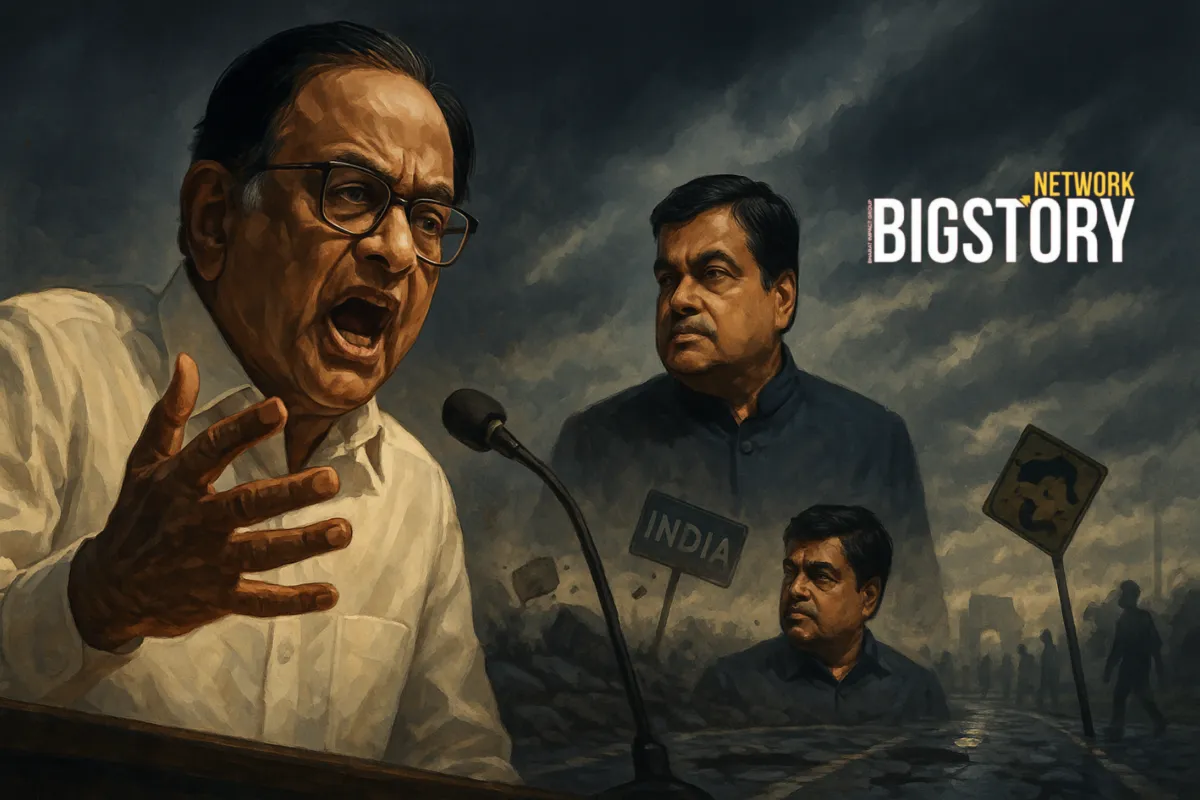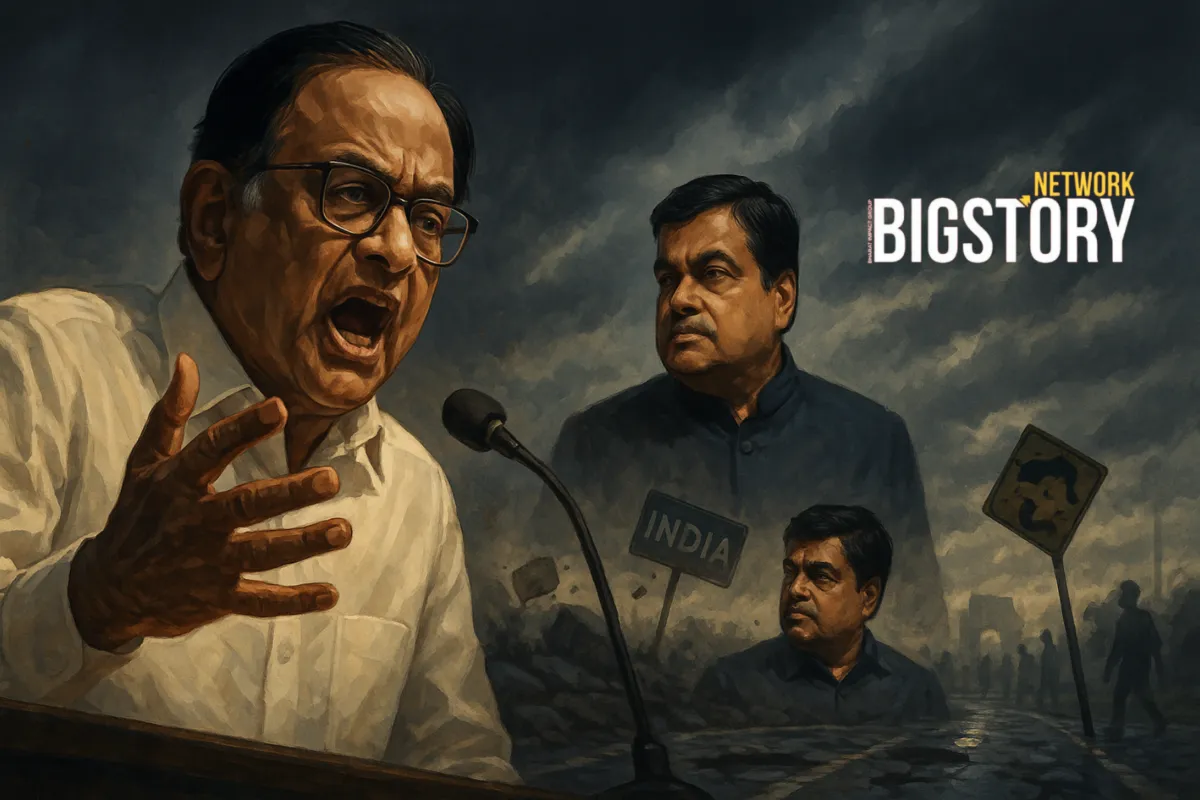A social-media scuffle over Bengaluru’s crumbling roads has morphed into India’s sharpest conversation about infrastructure accountability in years. Former finance minister P. Chidambaram, reacting to headlines that Biocon chair Kiran Mazumdar-Shaw had offered to fund road repairs (she later clarified she hadn’t), argued that India’s public works don’t suffer from a money problem so much as an execution problem—and proposed a pilot that would flip accountability on its head.
What happened
- Bengaluru’s road woes—potholes that reappear within weeks, flood-prone corridors, and chronic repair delays—triggered familiar public frustration and an unusually personal back-and-forth between industry leaders and the state government.
- Into that churn stepped Chidambaram with a two-part message: (1) funding is not the binding constraint; (2) the country needs a new accountability model.
- His suggestion: keep public tenders and public money, but put each project under a named private supervisor (an industrialist or company) with contractual, financial, and reputational liability for quality and timelines. If a road fails within the warranty window, penalties and cost overruns hit the supervisor’s escrow—not the taxpayer.
Why it matters now
Bengaluru is India’s most visible contradiction: a global tech hub running on failing civic hardware. The state says it has sanctioned large sums and filled thousands of potholes, yet logistics firms and commuters report short-lived fixes and mounting delays. That mismatch between spend and service is exactly the gap Chidambaram is targeting.
More broadly, India is in the middle of the biggest public-works push in its history. Quantity is up; quality is contested. Each monsoon surfaces the same questions: Who signed off on the design? Who tested the materials? Who pays when it fails?
The proposal, in plain terms
Chidambaram’s pilot reads like a PPP 2.0 with teeth:
- Public money, private supervision: Government continues to run transparent tenders. A willing private entity supervises end-to-end execution.
- Personal liability: Delays, defects, and cost overruns trigger automatic penalties on the supervisor’s escrow or performance bond.
- Performance-based payout: Payments link to durability metrics—not inauguration day photos. Think multi-season thresholds for rutting, cracking, and drainage performance.
- Independent measurement: Third-party QA partnered with instrumented verification (periodic road scans, moisture and compaction logs, GPS-stamped work diaries).
- Open dashboards: Core build and performance data published for public audit.
The choice of Bengaluru or Chennai as test beds is deliberate: high traffic, high stakes, and a constituency that can parse dashboards.
Bengaluru’s counterexample: method beats slogans
There is already a functioning model next door. Electronics City, managed by ELCITA, has kept its main corridors largely pothole-free using a design-first approach and predictive maintenance (regular machine-vision scans, swift micro-repairs, drainage discipline). The point isn’t that private equals perfect; it’s that aligned incentives plus instrumentation changes behavior long before the monsoon does.
What would success look like?
Within 12–18 months of a serious pilot, you’d expect to see:
- Fewer defects per km per season, validated by independent scans.
- Lower cost per km-year (what taxpayers really buy is service life, not asphalt tonnage).
- Stable ride-quality indices on the worst corridors through at least one full monsoon.
- A public log of every intervention: who ordered it, who executed it, what it cost, and how long it lasted.
Risk map—and mitigations
- Crony supervision: Require arm’s-length separation between supervisor and contractors; publish all relationships; rotate auditors.
- Box-checking tech: Calibrate sensors with random coring; allow citizen audits; keep raw data open to reduce massaging.
- Scope creep and blame games: Freeze scope at award; track change orders; split design vs build liability explicitly.
- Perverse incentives: Balance penalties with earn-backs for outperformance so supervisors aim for longevity, not minimal compliance.
Politics without the pantomime
Kiran Mazumdar-Shaw’s clarification—she didn’t offer to personally fund roads—doesn’t blunt the underlying point: industry wants predictable, durable infrastructure more than grand announcements. The state wants visible progress. A liability-first pilot gives both sides a measurable scoreboard and reduces the public conversation to things that can be timed, weighed, and tested.
Bottom line
India’s public works don’t just need more rupees; they need consequences that fit the failure. Chidambaram’s intervention takes a noisy, partisan controversy and points to the one lever that reliably changes outcomes in complex systems: aligned incentives measured in public. If Bengaluru—or any city—proves that personal liability plus transparent metrics can lift durability, the national equilibrium shifts from ribbon-cutting to service-life first.
FAQs
1) What exactly did P. Chidambaram propose?
Keep public tenders and public money, but appoint a named private supervisor (company/industry body) per project who is contractually liable for quality, timelines, and cost overruns—backed by escrow/performance bonds and measurable durability targets.
2) Did Kiran Mazumdar-Shaw actually offer to fund Bengaluru roads?
No. She clarified that reports of her personally funding roads were inaccurate. The debate her comments sparked still spotlighted the execution/quality gap.
3) How is this different from a normal PPP?
Classic PPPs diffuse responsibility across SPVs and departments. This model concentrates it: one supervisor with skin in the game, clear KPIs, and automatic penalties/earn-backs tied to performance data.
4) Who picks the private supervisor—and can they be the contractor?
The government would select via transparent criteria (track record, governance, technical bench). To avoid conflicts, the supervisor should be structurally independent from executing contractors; related-party work must be disclosed and ring-fenced.
5) Where does the money come from if not private donors?
From the public budget already allocated. The innovation is not funding; it’s accountability architecture: escrowed bonds, milestone-based payouts, and multi-year warranties.
6) What are the success metrics?
- Defects/km/season (potholes, rutting, cracking)
- Ride Quality Index (IRI) stability across monsoon cycles
- Drainage performance (ponding incidents/time to clear)
- Cost per km–year of service life
- Warranty compliance and mean time between interventions







Leave a Reply